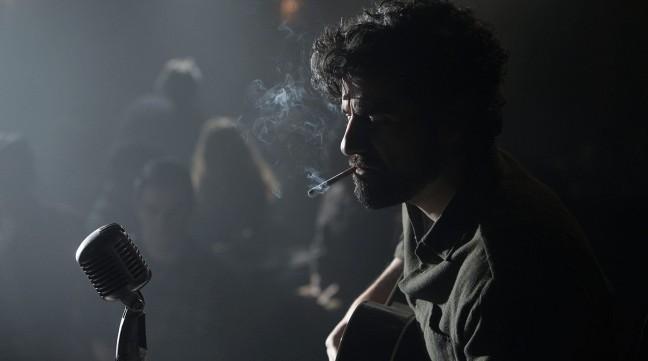It’s 1961 and wintertime in New York City. We’re introduced to Llewyn Davis, played by Oscar Isaac (“Drive”), in the dim spotlight of the Gaslight, a dark and melancholy cafe that seems to attract every struggling folk musician in the Greenwich Village area. Llewyn sits in a wooden chair, fatigued, his head hung over a steel-string guitar as his voice resonates the words of “Hang Me, Oh Hang Me.” The mood of the song lingers with us past the shadows of the Gaslight, into the unforgiving world surrounding Llewyn—a surreal sense of circular stagnation.
Very quickly, we develop a sense of Llewyn’s character. He’s an incredibly proud and talented musician, whose selfishness and bitterness isolate him from those he cares most about, namely Jean (Carey Mulligan, “The Great Gatsby”), a fellow folk artist who both loves and resents the Coen Brothers’ anti-hero.
Llewyn is on a journey forward, or at least it seems that way initially. As days pass, opportunities continue to fall through. For Llewyn, while it is indeed on a journey, it may not be a linear one; Llewyn is stuck in his own circular folk tale. “If it was never new, and it never gets old, then it’s a folk song,” says Llewyn to his all-too-familiar crowd of musical rejects at the Gaslight.
Music is the center of Llewyn’s existence, and it would be impossible to understand him without understanding his songs. The Coen Brothers knew this and made sure the musical performances pulled the story together. Still sore from the suicide of his musical partner, Llewyn sings on, and the weight of his consciousness resounds in his voice.
As he moves from couch to couch, imposing on the homes of musicians, family and others, Llewyn scurries around the City during the day in hopes of finding a way out of this seemingly bottomless rut. As we follow Llewyn day by day, our sense of time begins to blur, and days begin to blend together.
The Coen Brothers are in excellent form. If the story, acting and classic layers of subtle existentialism are not enough, the film’s cinematography will undoubtedly captivate any viewer. There is a beautiful, surreal light that follows Llewyn through the film. His life is continuously surrounded by grey, impeding glumness, which he could easily fall victim to. But through windows and skylights, cracks and spotlights, a particularly optimistic light enters into Llewyn’s world.
Along the way, we meet a hysterical array of eccentric personalities, from the sober and naïve Jim (Justin Timberlake, “In Time”) to Roland Turner, a jazz-playing heroin addict (John Goodman, “The Hangover Part III”) and Al Cody, a dopy, lanky baritone unable to part with his awkwardly large cowboy hat (Adam Driver, “Lincoln”). The fact is, they’re all idiots, they’re all selfish and destructive, but somehow they are each beautiful and intriguing and brilliant.
As the film comes to a close, we realize there is no moral to this particular story, no solution or direction. Llewyn is victim and master to himself as well as the world around him.
4 out of 5 stars


